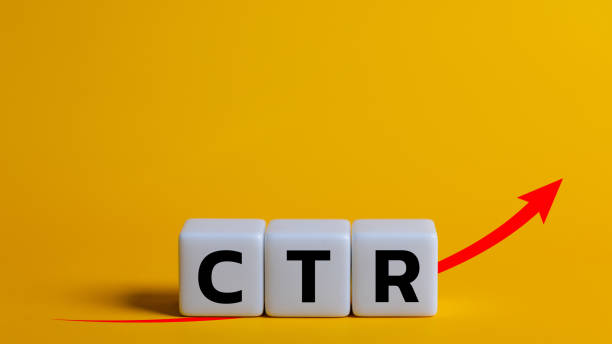Influencer marketing has evolved from a burgeoning trend into a critical strategy for many businesses. According to a 2023 report by Statista, the global influencer marketing industry was valued at over $21 billion, a significant leap from previous years. This surge reflects how brands of all sizes are leveraging influencers to reach new audiences, build brand awareness, and drive sales. However, while influencer marketing can be a powerful tool, it’s not a magic bullet. A successful campaign requires careful planning, execution, and most importantly, evaluation.
Measuring the success of an influencer campaign is essential, yet it can be challenging due to the varying metrics and goals across industries. While some campaigns are centered on brand awareness, others are focused on lead generation or direct sales. Thus, understanding which metrics to track and how to interpret them is key to determining whether your investment in influencer marketing is paying off.
In this article, we’ll explore how to measure the success of your influencer campaign, the key performance indicators (KPIs) to monitor, and real-world examples of brands that have effectively evaluated their influencer efforts. By the end, you’ll have a clearer understanding of how to assess the impact of your campaign and optimise it for future success.
Why do you need to Track the Performance Of Your Influencer Campaigns?
Tracking the performance of your influencer campaigns is critical for several reasons. Firstly, it allows you to quantify the return on investment (ROI) of your marketing efforts. Without proper tracking, it’s impossible to determine whether the money and resources you’ve invested are yielding a positive return. Analysing performance data ensures that you’re making informed decisions that contribute to your overall marketing strategy.
Secondly, tracking performance helps you identify what’s working and what’s not. Not all influencers will deliver the same results, and by closely monitoring KPIs such as engagement rates, click-through rates, and conversions, you can determine which influencers are most effective for your brand. This information is invaluable for refining your influencer selection process for future campaigns.
Lastly, tracking the performance of your campaigns provides insights into your target audience’s behavior and preferences. By analysing data such as which content formats perform best and what times of day your audience is most engaged, you can optimise your future campaigns for maximum impact. A report by Business Insider found that brands using data-driven strategies for influencer campaigns saw a 25% improvement in overall performance, emphasizing the importance of detailed performance tracking.
Understanding the importance of tracking performance is the foundation of a successful influencer marketing campaign.
Defining Your Campaign Objectives: The Foundation of Success
Before diving into the metrics, it’s essential to set clear goals for your influencer campaign. This step will guide which KPIs to focus on and help you evaluate success accurately. These goals will serve as the foundation for all of your metrics and KPIs (key performance indicators). Without clearly defined goals, it’s impossible to measure success accurately.
Common campaign objectives include:
- Brand Awareness: If your primary goal is to increase brand visibility, you will focus on metrics like reach, impressions, and follower growth. The aim is to get as many eyeballs on your brand as possible.
- Engagement: For campaigns focused on fostering relationships with your audience, you’ll want to measure engagement metrics such as likes, comments, shares, and overall interaction rates. These metrics reflect how effectively your content connects with your audience.
- Lead Generation or Conversions: If you’re aiming to drive sales or capture leads, conversion metrics such as click-through rates (CTR), discount code conversion rates, and ROI will be your primary focus.
- Customer Loyalty and Retention: For brands seeking to deepen relationships with their existing customer base, success may be measured by metrics like repeat purchase rates, customer lifetime value (CLV), and loyalty program sign-ups.
A survey by Influencer Marketing Hub revealed that 39% of marketers measure their campaigns based on engagement metrics, while 34% prioritise conversions. Identifying your primary objective will help you decide which metrics matter most.
Key Metrics to Track for Influencer Campaign Success
1. Reach and Impressions
Reach refers to the total number of unique users who have seen your content, while impressions represent the total number of times your content has been displayed, regardless of clicks. These metrics are essential for brand awareness campaigns. According to a 2022 report by Mediakix, influencer campaigns generate 11 times higher ROI than traditional banner ads. Therefore, reach and impressions are critical in assessing the campaign’s overall visibility.
You should also analyse the demographics of the reach to ensure that the influencer is connecting with your target audience. For instance, if your brand targets Gen Z but your reach data shows a predominantly millennial audience, it may indicate a misalignment with the influencer’s followers. Tools like Instagram Insights and Facebook Analytics offer these metrics.
2. Engagement Metrics
Engagement is often a key indicator of how well an influencer’s content resonates with their audience. The most common engagement metrics include likes, comments, shares, and saves. The 2021 Influencer Marketing Hub report highlighted that engagement rate is a crucial factor for brands in determining an influencer’s effectiveness.
This metric gives you a sense of how much of the influencer’s audience is actively interacting with the content. Additionally, analysing the sentiment behind the engagement is important. Positive comments and shares suggest that the content is resonating well, whereas negative comments or minimal interaction could indicate a lack of connection with the audience.
3. Click-Through Rate (CTR) and Conversion Rate
If your campaign is focused on driving traffic to a website or landing page, the click-through rate (CTR) becomes a crucial metric. CTR measures the percentage of people who click on a link relative to the total number of impressions. This metric helps assess how effectively the influencer is motivating their audience to take action.
Tracking conversion rates is equally important. Conversions can range from product purchases to newsletter sign-ups, depending on the campaign goals. According to a 2023 study by Influencer Marketing Hub, influencer-driven campaigns resulted in an average conversion rate of 4%, with some industries, such as fashion and beauty, seeing even higher numbers.
Using tools like Google Analytics allows you to setup UTM parameters and tracking pixels so you can trace the journey of each click from the influencer’s post to your website easily or dedicated affiliate marketing platforms like Referwo can help you generate discount codes and track the usage of the discount codes effectively.
4. Return on Investment (ROI)
ROI is perhaps the most critical metric for evaluating the financial success of your influencer campaign. ROI assesses the revenue earned from the campaign relative to the cost of executing it.
A positive ROI indicates that your campaign is financially successful, while a negative ROI suggests that the costs outweigh the benefits. According to a 2023 survey by Linqia, 89% of marketers said ROI is the most important metric for determining campaign success, yet only 39% felt confident in their ability to measure it effectively. This gap highlights the need for robust tracking and attribution systems to ensure accurate ROI calculations.
Streamline Your Influencer Marketing with Referwo: Measure Campaign Success with Ease
With Referwo, managing and measuring the success of your influencer marketing campaigns has never been easier. Here’s how Referwo can help you streamline your processes and make data-driven decisions:
- Automatic Discount Code Generation:
- Referwo automatically generates discount codes for each influencer.
- These unique codes not only encourage purchases but also serve as a tool to track the effectiveness of each influencer.
- Track Influencer-Generated Sales:
- Easily see how many sales each influencer has brought to your brand.
- Analyse CTR (Click-Through Rate) and conversion rates tied to each discount code.
- Gain direct, actionable insights into the performance of individual influencers.
- Real-Time Performance Tracking:
- Monitor the ongoing performance of your campaigns with real-time data.
- Identify which influencers are consistently driving traffic and sales.
- Determine which content resonates best with your audience.
- Advanced Analytics for Long-Term Success:
- Go beyond immediate results and assess the long-term impact of your campaigns.
- Use Referwo’s advanced analytics to understand the broader picture.
- Make informed decisions about future campaigns based on clear data.
- Adjust current strategies to maximise success.
By leveraging Referwo’s capabilities, you can ensure that your influencer marketing efforts are not only effective but also aligned with your long-term business goals.
Real-Time Adjustments and Optimisation
One of the benefits of digital marketing, including influencer campaigns, is the ability to make real-time adjustments. By continuously monitoring your KPIs, you can identify which influencers and content are performing well and which are not. This allows you to adjust your strategy on the fly, reallocating your budget to the most effective influencers or refining your messaging to improve engagement.
For instance, if you notice that certain influencers are driving significant traffic but low conversions, you might revisit your call-to-action or landing page design. Conversely, if engagement rates are lower than expected, consider collaborating with the influencer on a new type of content or tweaking the timing of your posts.
Brands that use data to guide their influencer strategy are more likely to see sustained success. As stated in a 2023 report by Business Insider, brands that optimise their influencer campaigns through real-time data see a 25% improvement in overall campaign performance.
Avoiding Common Pitfalls in Measuring Success
While measuring success in influencer campaigns is essential, it’s easy to fall into common traps that can skew your results. Here are some pitfalls to avoid:
- Focusing Solely on Vanity Metrics: While reach and likes are important, they don’t always translate to meaningful results. Make sure to prioritise metrics that align with your campaign goals, such as conversion rates or customer lifetime value.
- Not Tracking the Right Audience: Ensure that your influencer’s audience aligns with your target demographic. If not, even the most engaging content may not drive the desired results.
- Ignoring Long-Term Impact: Influencer marketing is not always about immediate returns. Building brand loyalty and fostering community engagement may take time but can yield significant long-term benefits.
- Failure to Attribute Success Accurately: If you’re running multi-channel campaigns, ensure you have systems in place to attribute sales, traffic, or leads to the correct sources. This may involve
Conclusion
Influencer marketing holds tremendous potential, but its success hinges on proper measurement and evaluation. From setting clear goals at the outset to tracking key KPIs and using the right tools, the ability to assess and optimise your influencer campaign is crucial for driving tangible results. Brands that approach influencer marketing with a data-driven mindset are better positioned to maximise their ROI and build long-term partnerships with influencers who genuinely align with their brand.
As influencer marketing continues to grow in prominence, it’s essential to stay ahead of the curve by continually refining your approach. Whether you’re working with micro-influencers or mega-stars, remember that the true power of influencer marketing lies in its ability to create authentic connections between your brand and your audience. By measuring success effectively, you can ensure that your influencer campaigns not only meet your business objectives but also deliver lasting value.
Ready to elevate your influencer marketing efforts? Book a demo today to see how Referwo can help you measure success and optimise your campaigns!














